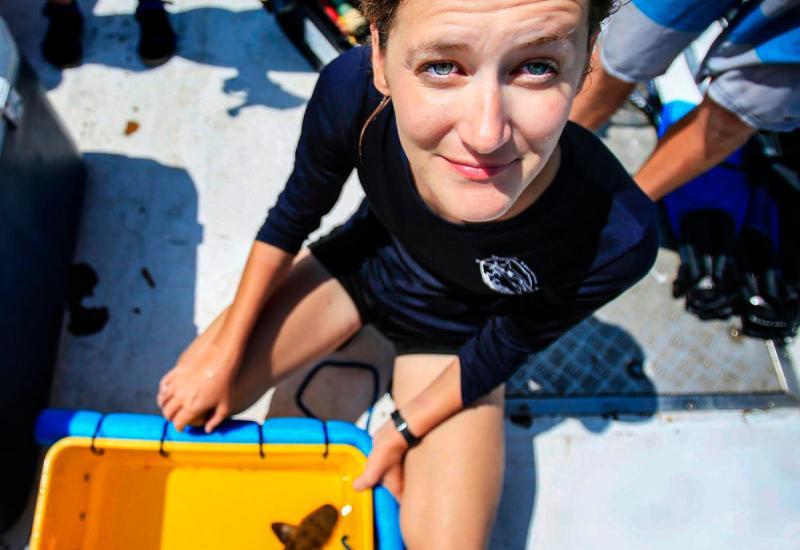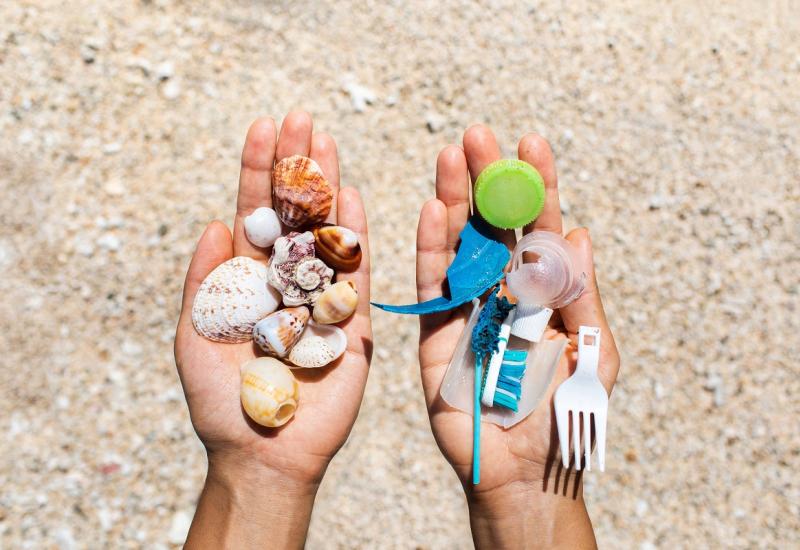Divers Guide To Marine Life: Sharks
Divers love to see sharks, but we forget that part of what makes sharks so amazing is often in the details, not just in the toothy swim-by. Some interesting specifics of their life histories, feeding and behaviors from all over the world are good to know, too. There are still a lot of mysteries and unanswered questions about sharks but that is part of what makes them fascinating to us. Below is a list of the sharks that divers seek and see the most often and some key facts you’ll want to know about them.
SPECIES GUIDE INCLUDES:
- Conservation status
- About the name/other names
- Physical description/size
- Range/habitat
- Maturity and reproduction
- What they eat
- Important or Fun Fact
- Diver interaction
SPECIES:
- Blacktip Reef Shark
- Blue Shark
- Broadnose Sevengill Shark
- Bull Shark
- Caribbean Reef Shark
- Great Hammerhead Shark
- Great White Shark
- Grey Reef Shark
- Lemon Shark
- Nurse Shark
- Oceanic Whitetip Shark
- Tiger Shark
- Whale Shark
ACTION ITEMS:
Be a citizen scientist for sharks with the SharksCount Program.
Divers see sharks the most frequently and regularly and are often familiar with local seasonal sightings. However, they often don’t have the training or tools to accurately and consistently record these valuable sightings in a way that can be useful to shark conservation and advocacy.
Do you see sharks occasionally or regularly while diving? The SharksCount Program empowers recreational divers to log and identify the sharks they see on their dives using simple, fun and free tools – regional shark identification guides, shark sighting logs and team support. The program seeks to close an important data gaps by enabling divers to act as “citizen scientists for sharks.” Over time, these accumulated sightings can provide essential information about local shark populations with the potential of improving protections for sharks.
SharksCount works with leading marine scientists to ensure that our data collection methodology is well developed and useful. As Dr. Steve Kessel of Cardiff University’s School of Biosciences explains, "I**** recently needed to find where to obtain more lemon sharks to tag for my research study in Florida. The SharksCount Program provided me with data on where their divers had seen and logged these sharks and those data helped me to find them more effectively. This is a great example of how this citizen science program can work in conjunction with scientific research, regionally.”
The program’s motto is “We’re counting sharks because every shark counts.” You can learn more about the program and sign up to be part of the growing team of shark counters worldwide at: www.sharksavers.org/sharkscount and on Facebook at: www.facebook.com/sharkscount
- Submit your whale shark photos to the ECOOCEAN database.
The ECOCEAN Whale Shark Photo-Identification Library is a visual database of whale shark (Rhincodon typus) encounters and of individually catalogued whale sharks. The library is maintained and used by marine biologists to collect and analyze whale shark encounter data to learn more about these amazing creatures.
The library uses photographs of the skin patterning behind the gills of each shark and any scars to distinguish between individual animals. Cutting-edge software supports rapid identification using pattern recognition and photo management tools.
You can assist with this whale-shark research by submitting photos and sighting information. The information you submit will be used in mark-recapture studies to help with the global conservation of this threatened species. Learn more about this program at: http://www.whaleshark.org
CONSERVATION NOTES:
IUCN or the International Union for the Conservation of Nature is the world’s oldest and largest global environmental organization working internationally to conserve biodiversity since 1948. The IUCN Red List of Threatened Species™ provides taxonomic, conservation status and distribution information on plants and animals that have been globally evaluated using the IUCN Red List Categories and Criteria that reviews data from scientists and specialist, globally. In summary, the categories are:
- Critically Endangered = extremely high risk of extinction in the wild
- Endangered = threatened by a high risk of extinction in the wild
- Vulnerable = threatened by a high risk of extinction in the wild
- Near Threatened = likely to be threatened, becoming vulnerable or endangered in the near future
- Least Concern = does not qualify for a threatened or endangered category or is abundant.
- Data Deficient = inadequate information to make an assessment of extinction risk
- Not Evaluated = has not been evaluated against IUCN criteria
You can learn more about the IUCN’s Red List of Threatened Species ™ at: http://www.iucnredlist.org
SPECIAL THANKS:
The following photographers graciously donated their images for use in this guide:
- Mary O’Malley
- Robert Lupo Dion
- Ivan Rutzen
- Samantha Whitcraft
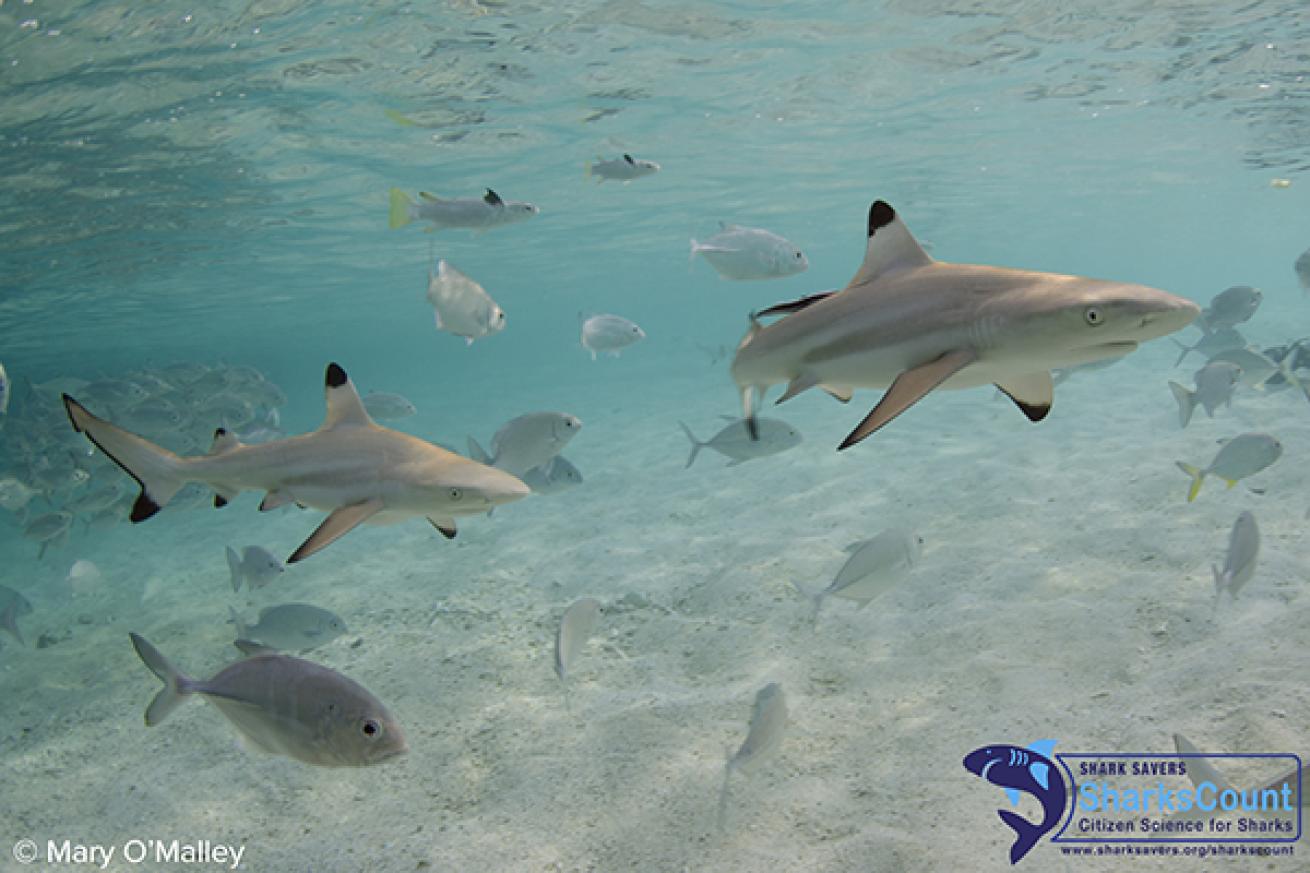
Mary O'MalleyBlacktip Reef Shark
The blacktip reef shark can grow to about 1.6 meters (5.25 feet) in length.
Learn more about the blacktip reef shark here
Divers love to see sharks, but we forget that part of what makes sharks so amazing is often in the details, not just in the toothy swim-by. Some interesting specifics of their life histories, feeding and behaviors from all over the world are good to know, too. There are still a lot of mysteries and unanswered questions about sharks but that is part of what makes them fascinating to us. Below is a list of the sharks that divers seek and see the most often and some key facts you’ll want to know about them.
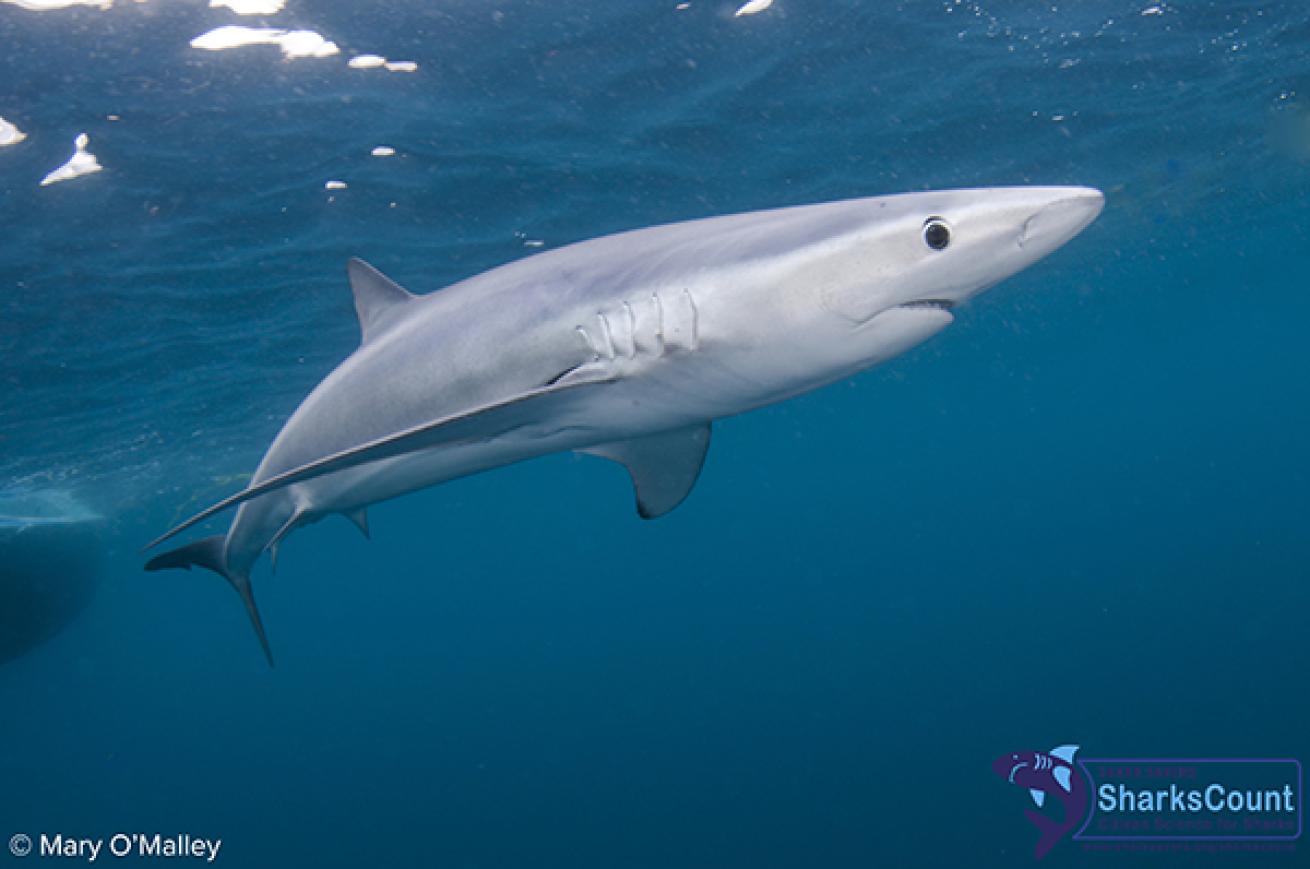
Mary O'MalleyBlue shark
In some countries and fisheries, blue sharks are called "blue dogs."
Learn more about blue sharks here
Guide Contents
| GUIDE INCLUDES | SPECIES |
|---|---|
| Conservation status | Blacktip Reef Shark |
| About the name/other names | Blue Shark |
| Physical description/size | Broadnose Sevengill Shark |
| Range/habitat | Bull Shark |
| Maturity and reproduction | Caribbean Reef Shark |
| What they eat | Great Hammerhead Shark |
| Important or Fun Fact | Great White Shark |
| Diver interaction | Grey Reef Shark |
| Lemon Shark | |
| Nurse Shark | |
| Oceanic Whitetip Shark | |
| Tiger Shark | |
| Whale Shark |
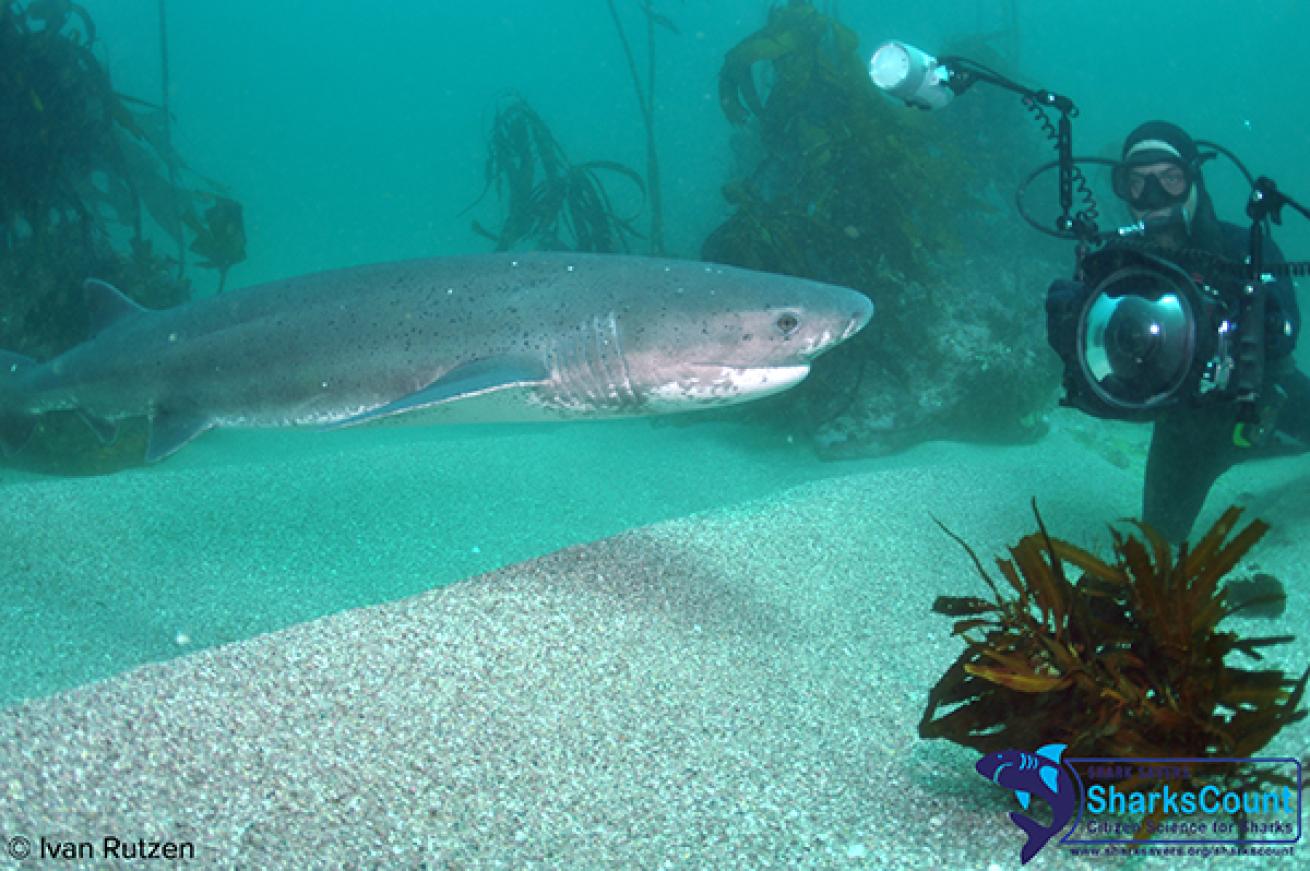
Ivan RutzenBroadnose Sevengill Shark
Broadnose sevengill sharks feed on other sharks, fish, marine mammals and sometimes scavenge dead fish.
Learn more about broadnose sevengill sharks here
ACTION ITEMS:
Be a citizen scientist for sharks with the SharksCount Program.
Divers see sharks the most frequently and regularly and are often familiar with local seasonal sightings. However, they often don’t have the training or tools to accurately and consistently record these valuable sightings in a way that can be useful to shark conservation and advocacy.

Shark SaversShark Savers
Do you see sharks occasionally or regularly while diving? The SharksCount Program empowers recreational divers to log and identify the sharks they see on their dives using simple, fun and free tools – regional shark identification guides, shark sighting logs and team support. The program seeks to close an important data gaps by enabling divers to act as “citizen scientists for sharks.” Over time, these accumulated sightings can provide essential information about local shark populations with the potential of improving protections for sharks.
SharksCount works with leading marine scientists to ensure that our data collection methodology is well developed and useful. As Dr. Steve Kessel of Cardiff University’s School of Biosciences explains, "I recently needed to find where to obtain more lemon sharks to tag for my research study in Florida. The SharksCount Program provided me with data on where their divers had seen and logged these sharks and those data helped me to find them more effectively. This is a great example of how this citizen science program can work in conjunction with scientific research, regionally.”
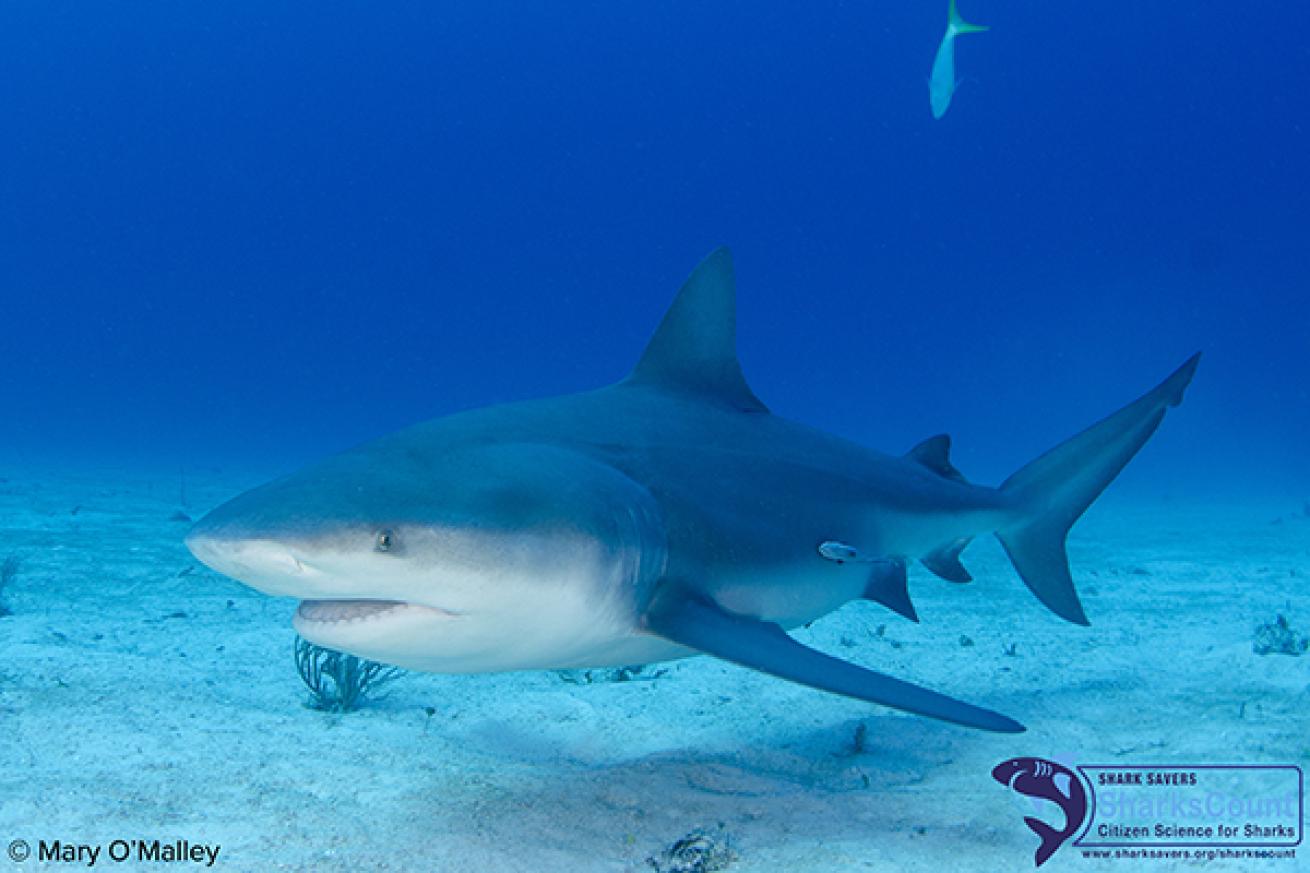
Mary O'MalleyBull Shark
Bull shark dives are popular in Florida, Mexico, South Africa and Fiji.
Learn more about bull sharks here
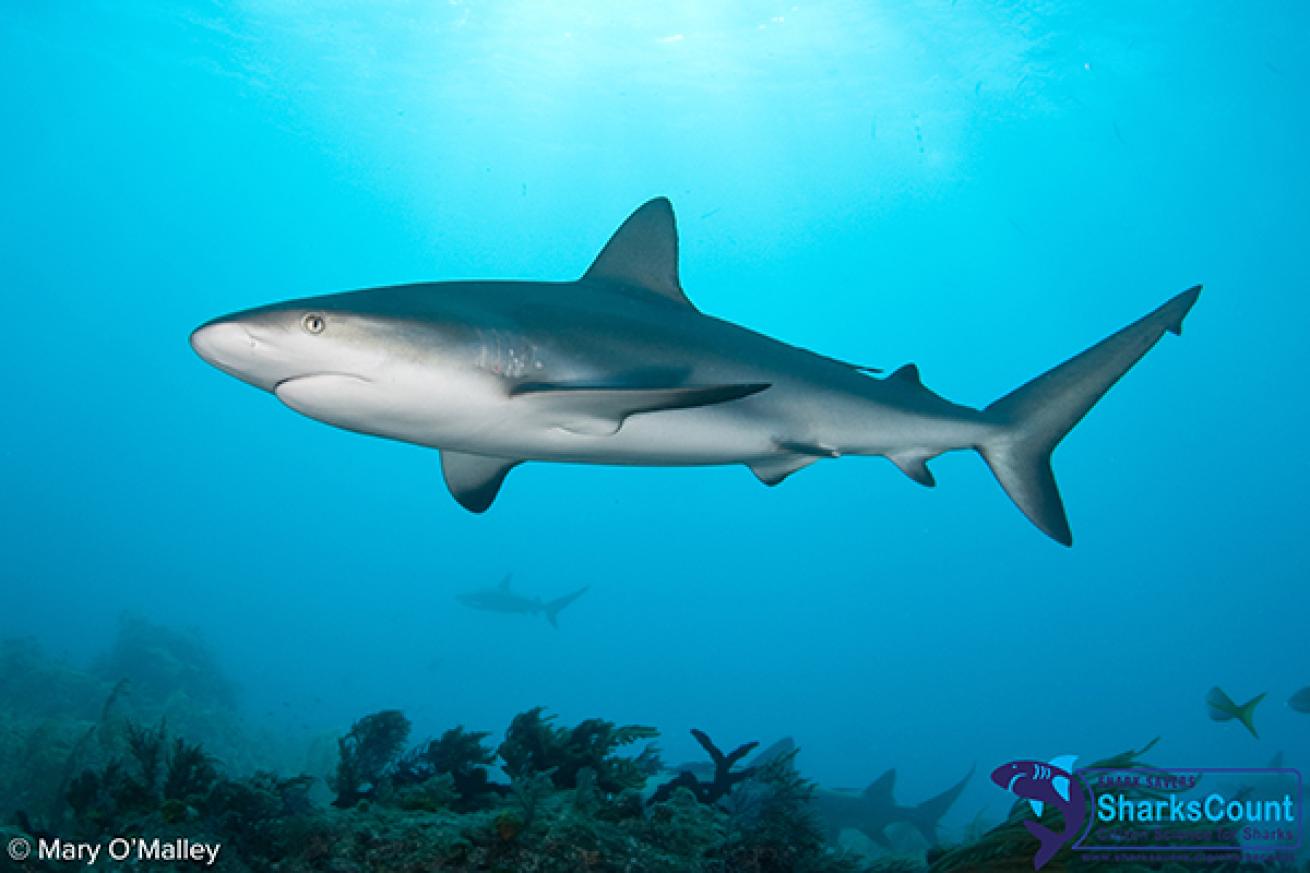
Mary O'MalleyCaribbean Reef Shark
Caribbean reef sharks have a year-long pregnancy and have three to six pups.
Learn more about Caribbean reef sharks here
The program’s motto is “We’re counting sharks because every shark counts.” You can learn more about the program and sign up to be part of the growing team of shark counters worldwide at: www.sharksavers.org/sharkscount and on Facebook at: www.facebook.com/sharkscount
- Submit your whale shark photos to the ECOOCEAN database.
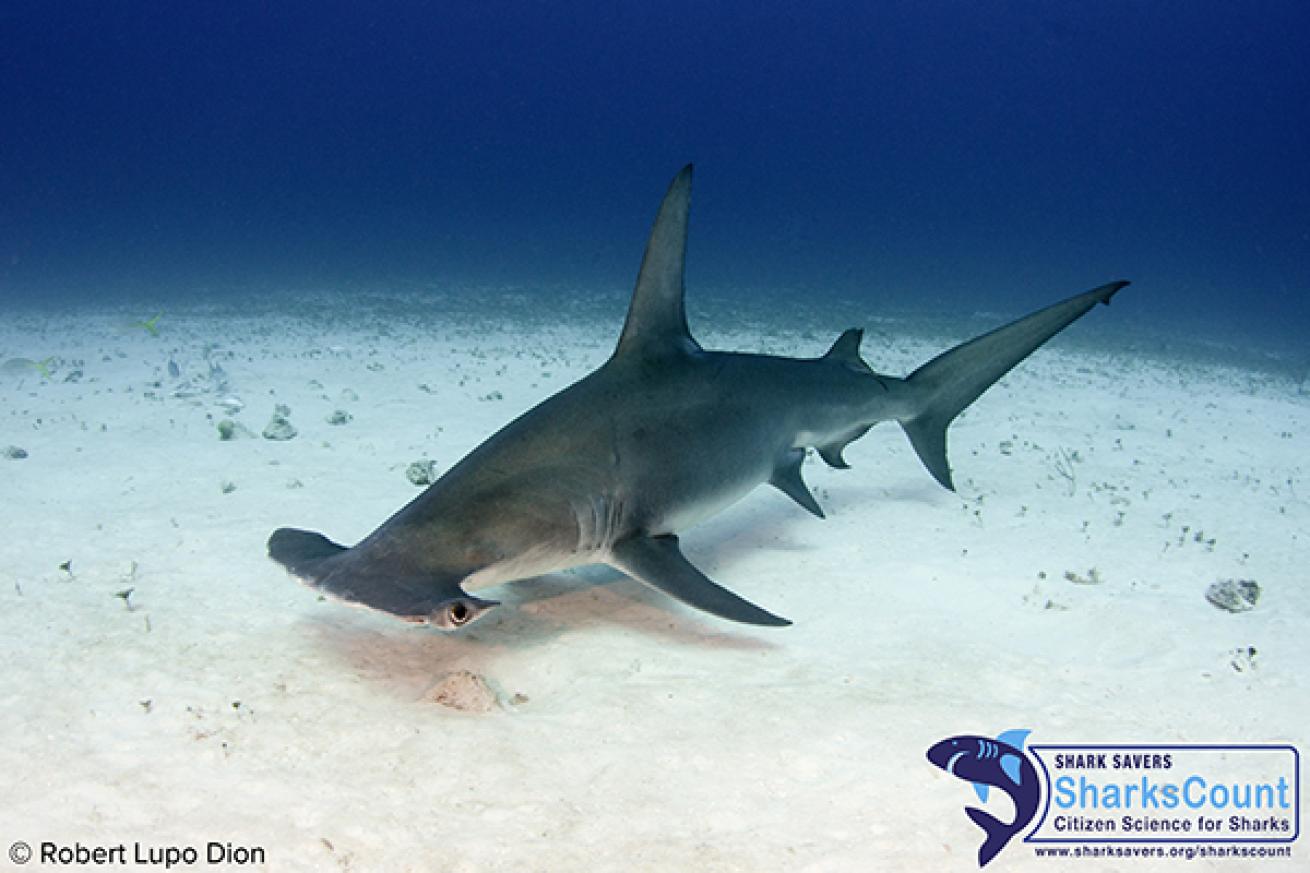
Robert Lupo DionGreat Hammerhead Shark
Great hammerhead shark fins are considered high quality by the fin trade and are one of the 14 species most frequently found in Hong Kong Markets.
Learn more about great hammerhead sharks here
The ECOCEAN Whale Shark Photo-Identification Library is a visual database of whale shark (Rhincodon typus) encounters and of individually catalogued whale sharks. The library is maintained and used by marine biologists to collect and analyze whale shark encounter data to learn more about these amazing creatures.
The library uses photographs of the skin patterning behind the gills of each shark and any scars to distinguish between individual animals. Cutting-edge software supports rapid identification using pattern recognition and photo management tools.
You can assist with this whale-shark research by submitting photos and sighting information. The information you submit will be used in mark-recapture studies to help with the global conservation of this threatened species. Learn more about this program at: http://www.whaleshark.org
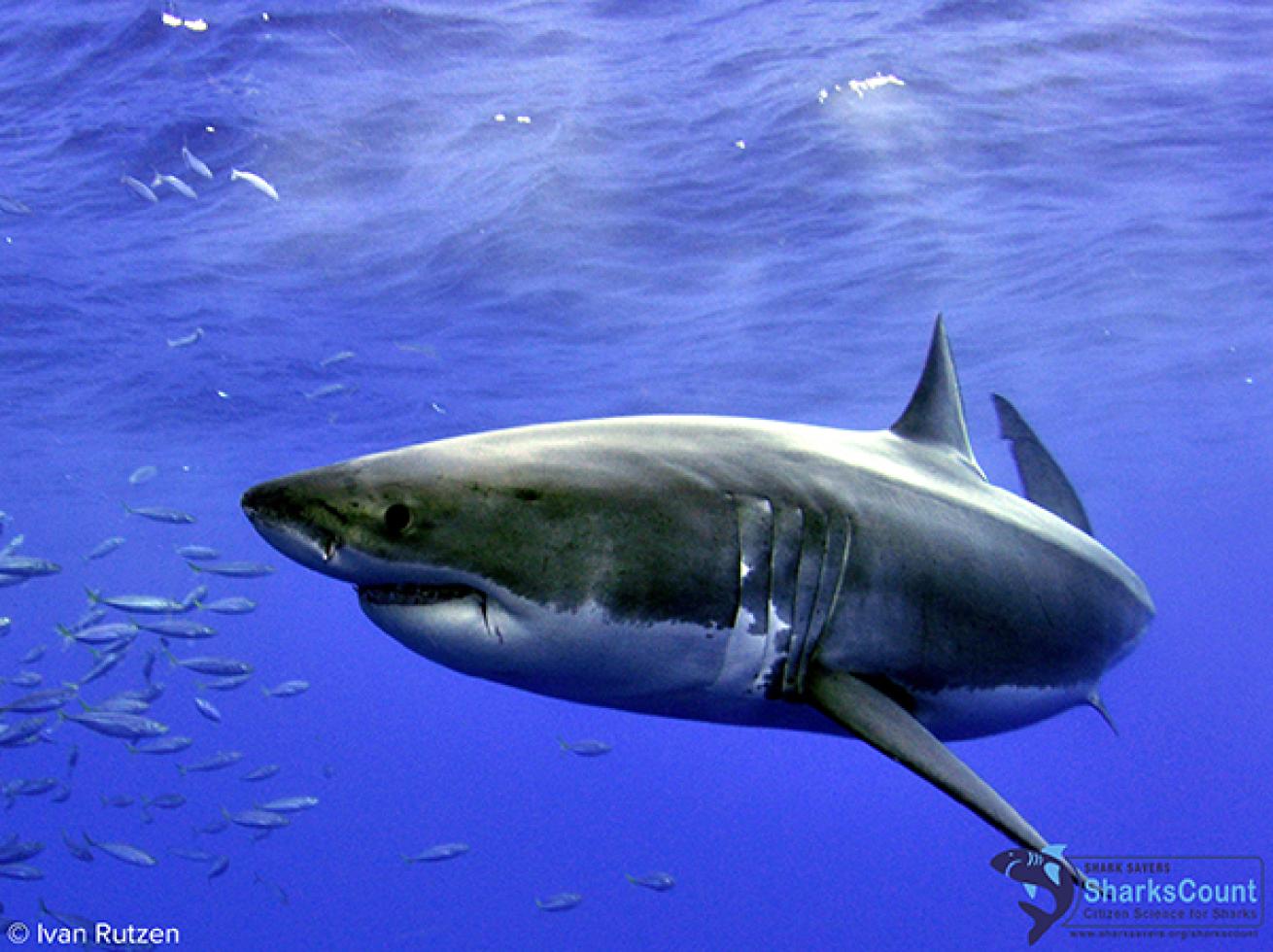
Ivan RutzenGreat White Shark
Great whites have 26 triangular and serrated teeth on the upper jaw and 24 pointed teeth on the bottow jaw. They are thought to go through 30,000 teeth in a lifetime.
Learn more about great white sharks here
CONSERVATION NOTES:
IUCN or the International Union for the Conservation of Nature is the world’s oldest and largest global environmental organization working internationally to conserve biodiversity since 1948. The IUCN Red List of Threatened Species™ provides taxonomic, conservation status and distribution information on plants and animals that have been globally evaluated using the IUCN Red List Categories and Criteria that reviews data from scientists and specialist, globally. In summary, the categories are:
- Critically Endangered = extremely high risk of extinction in the wild
- Endangered = threatened by a high risk of extinction in the wild
- Vulnerable = threatened by a high risk of extinction in the wild
- Near Threatened = likely to be threatened, becoming vulnerable or endangered in the near future
- Least Concern = does not qualify for a threatened or endangered category or is abundant.
- Data Deficient = inadequate information to make an assessment of extinction risk
- Not Evaluated = has not been evaluated against IUCN criteria
You can learn more about the IUCN’s Red List of Threatened Species ™ at: http://www.iucnredlist.org
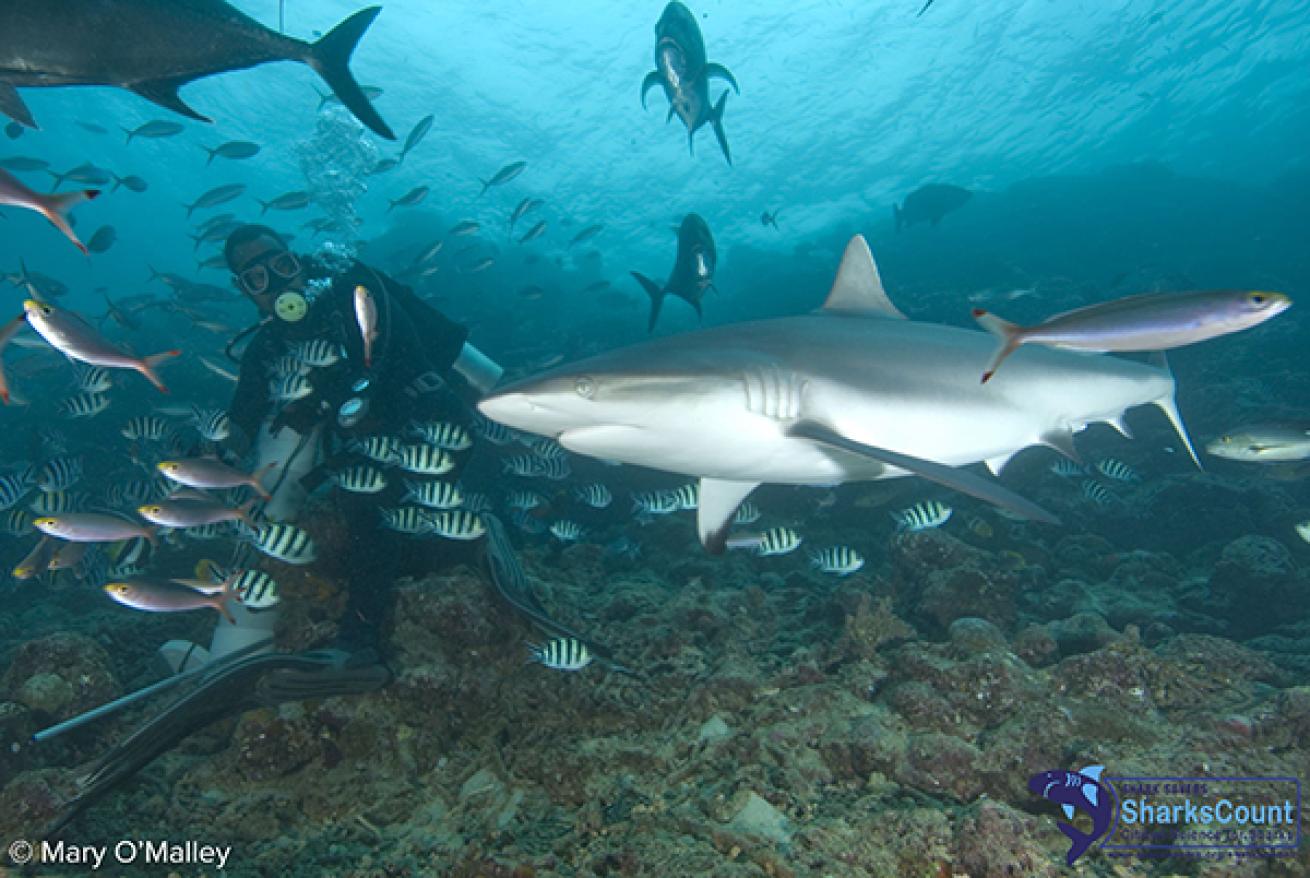
Mary O'MalleyGrey Reef Shark
Grey reef sharks are considered quite social, aggregating in large numbers in strong currents.
Learn more about grey reef sharks here
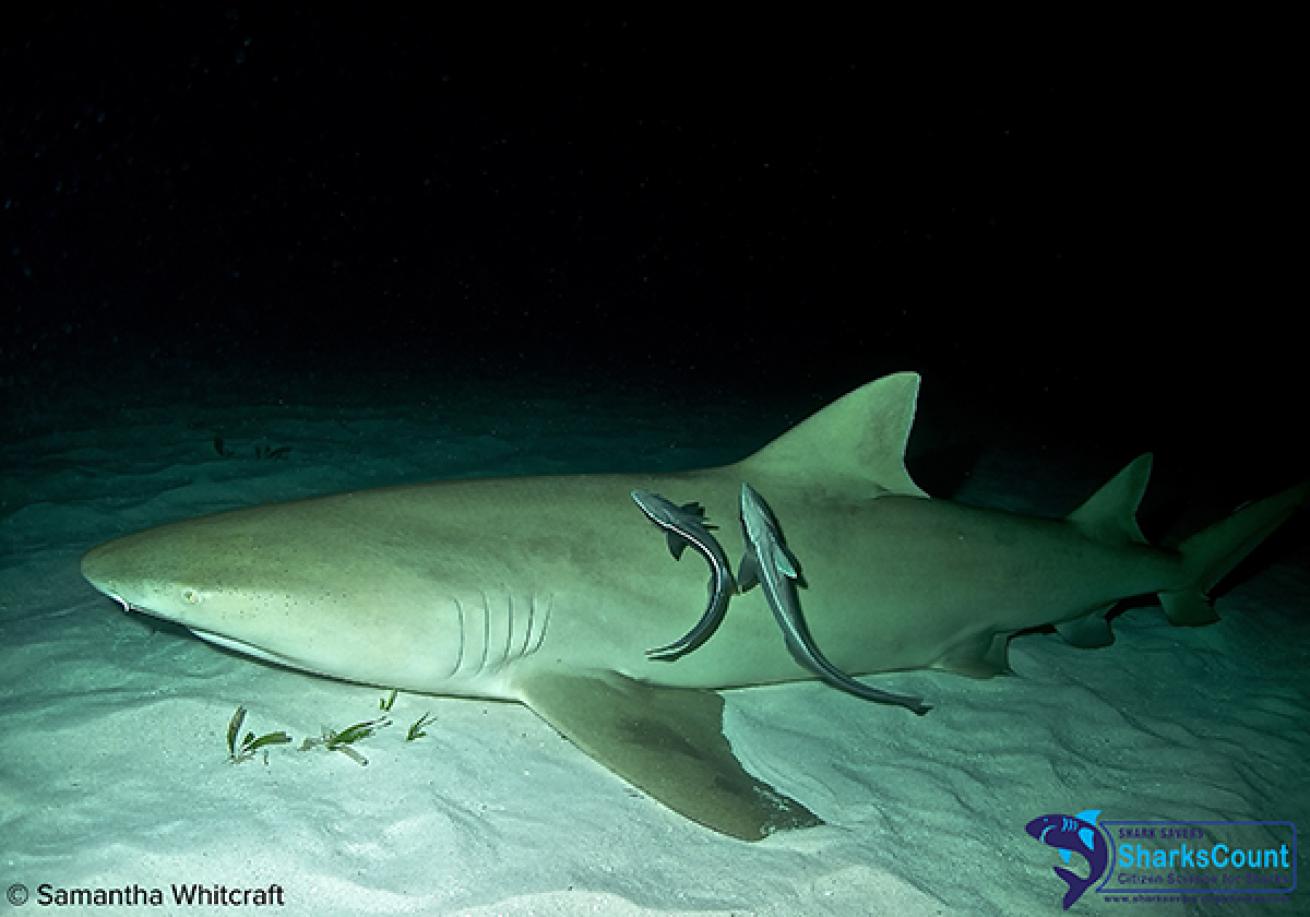
Samantha WhitcraftLemon Shark
Lemon sharks can be identified by their yellow-sih brown coloration and second dorsal fin that is almost as large as the first.
Learn more about lemon sharks here
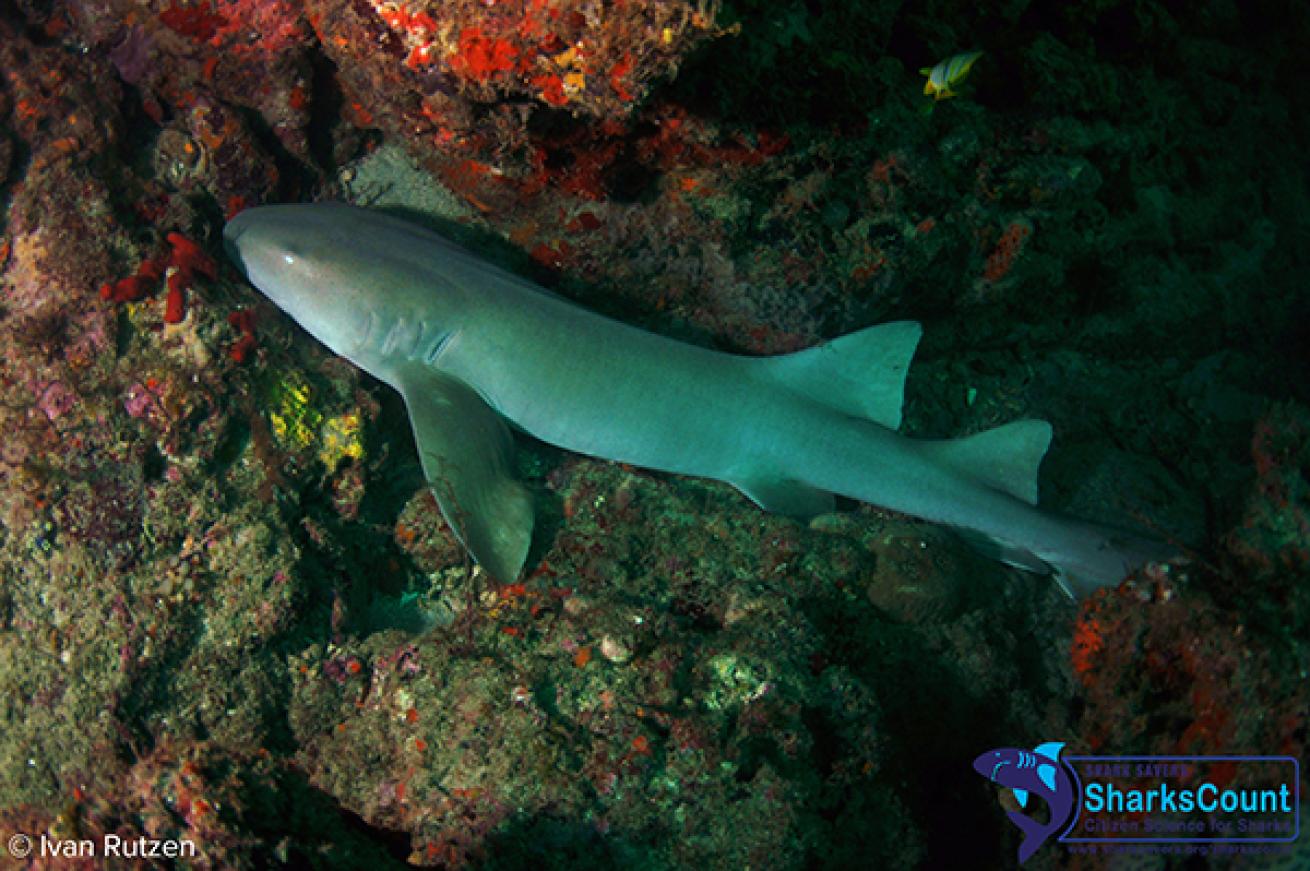
Ivan RutzenNurse Shark
The nurse shark is one of the most common sharks sighted by divers throughout its wide tropical and sub-tropical range.
Learn more about nurse sharks here
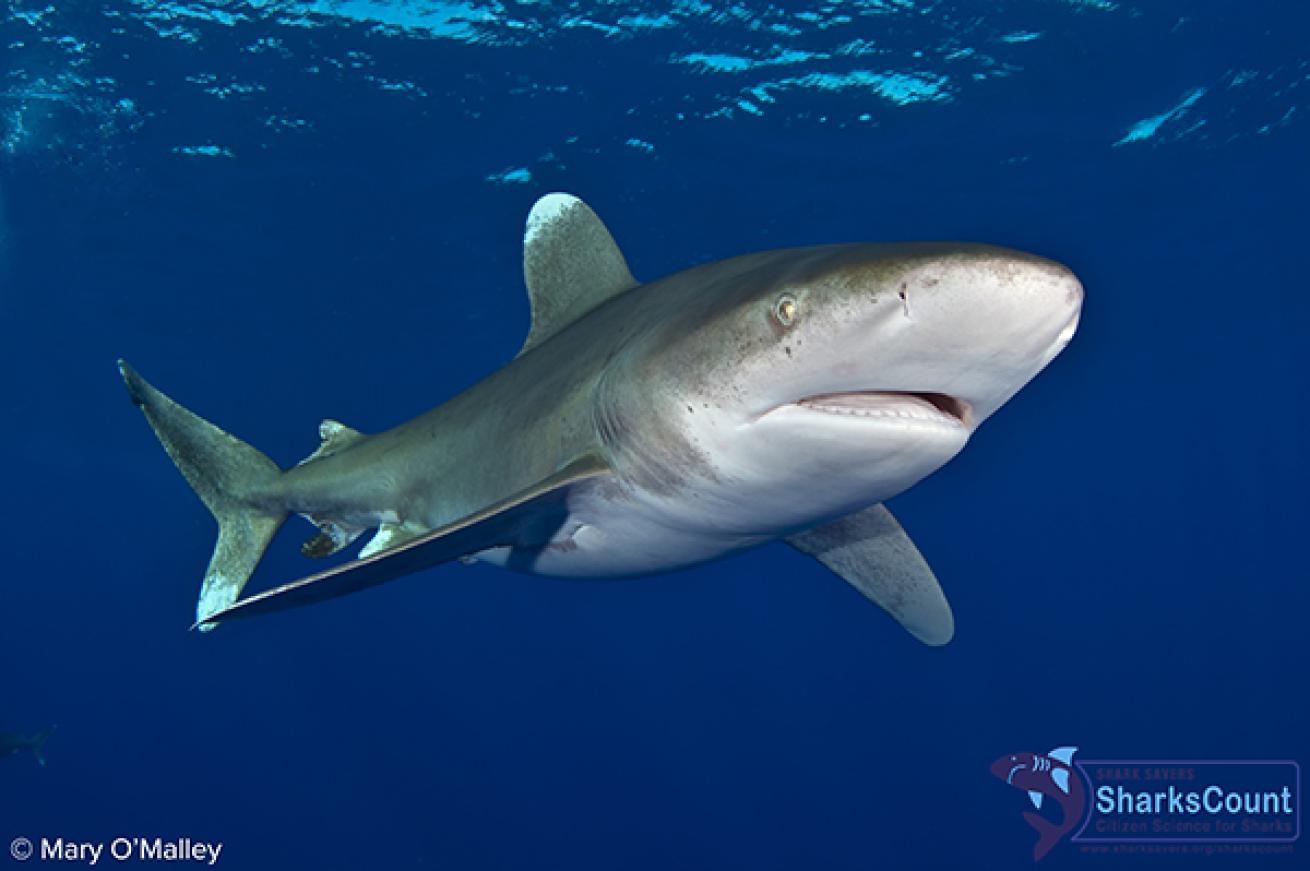
Mary O'MalleyOceanic Whitetip Shark
Oceanic whitetip sharks can be identified by their long, rounded fins with blotchy, white coloration, especially evident on the tips of the dorsal and pectoral fins.
Learn more about oceanic whitetip sharks here
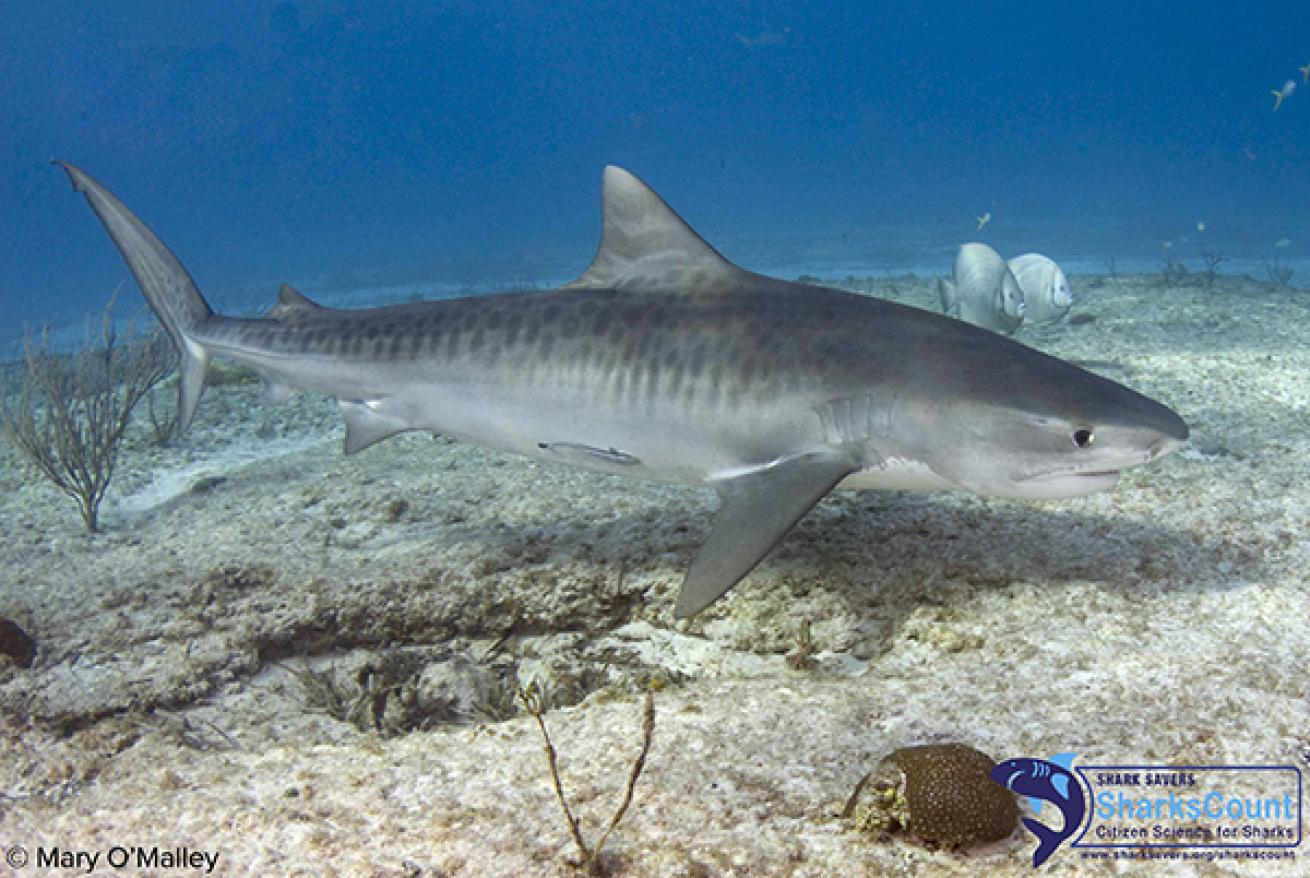
Mary O'MalleyTiger Shark
Tiger sharks are legally protected in some areas where they are popular with recreational divers and photographers, such as Florida and the Bahamas.
Learn more about tiger sharks here
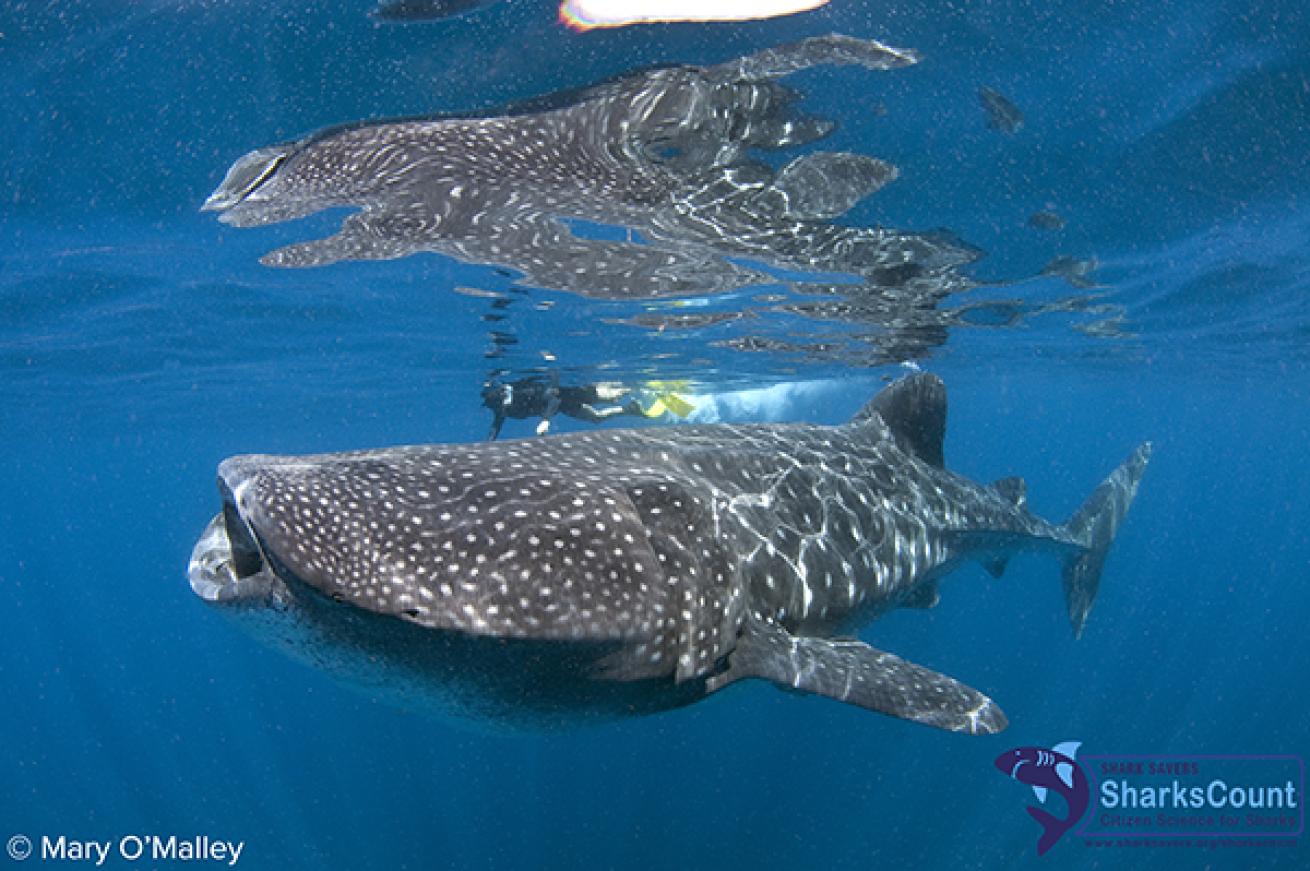
Mary O'MalleyWhale Shark
Whale sharks are only one of three filter-feeding species of shark, along with basking sharks and megamouth sharks. They feed on plankton comprised of small fish such as sardines, anchovies and juvenile tunas and albacore.
Learn more about whale sharks here
SPECIAL THANKS:
The following photographers graciously donated their images for use in this guide:
- Mary O’Malley
- Robert Lupo Dion
- Ivan Rutzen
- Samantha Whitcraft





